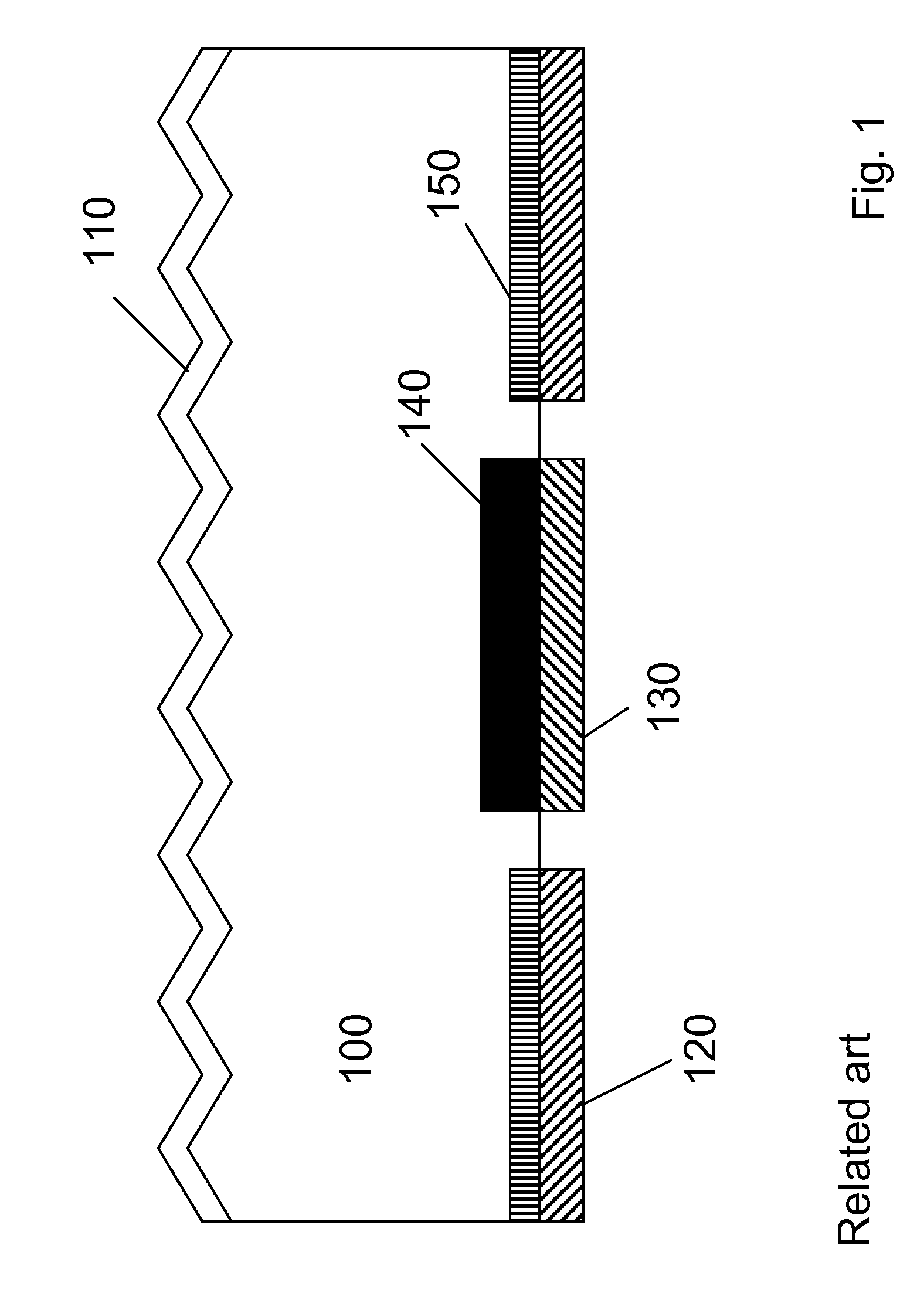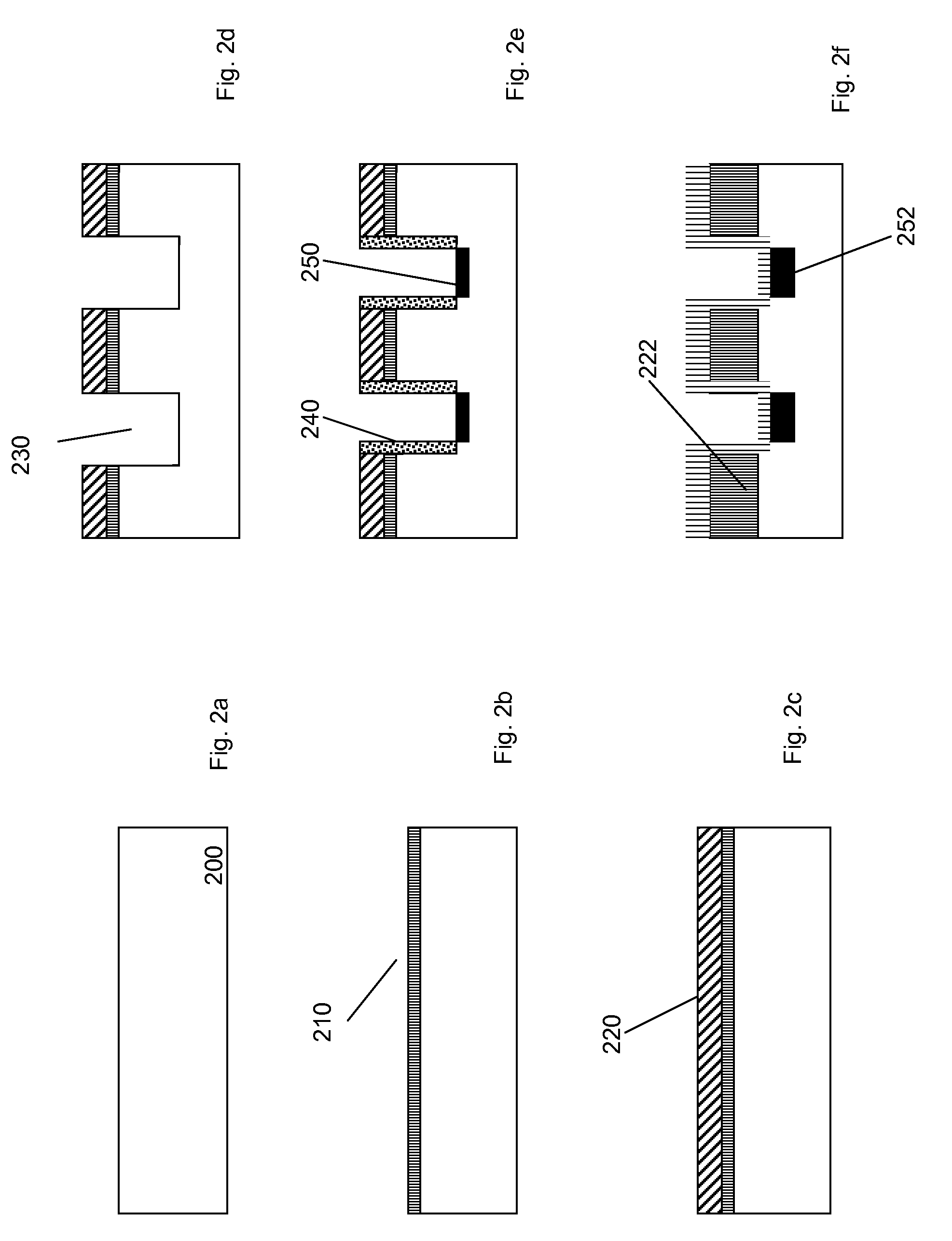Solar cell with interdigitated back contacts formed from high and low work-function-tuned silicides of the same metal
- Summary
- Abstract
- Description
- Claims
- Application Information
AI Technical Summary
Benefits of technology
Problems solved by technology
Method used
Image
Examples
Embodiment Construction
[0034]The foregoing and other objects, aspects, and advantages will be better understood from the following detailed description of the best and various embodiments. Throughout the various views and illustrative embodiments of the present disclosure, like reference numbers are used to designate like elements.
[0035]In a typical embodiment, an interdigitated borderless contact structure is fabricated of n-doped and p-doped contact regions that are both separated from each other and self-aligned with respect to each other. An important geometric feature of this structure is that one set of contacts is recessed relative to the other, so that the spacing between the contacts is in a vertical dimension rather than a horizontal one. The spacing between the contacts can thus be varied just by changing the recess depth, without changing a photolithographic mask.
[0036]In the exemplary process flow of FIGS. 2a to 2l, borderless interdigitated contacts are provided in a solar cell. The exemplar...
PUM
 Login to view more
Login to view more Abstract
Description
Claims
Application Information
 Login to view more
Login to view more - R&D Engineer
- R&D Manager
- IP Professional
- Industry Leading Data Capabilities
- Powerful AI technology
- Patent DNA Extraction
Browse by: Latest US Patents, China's latest patents, Technical Efficacy Thesaurus, Application Domain, Technology Topic.
© 2024 PatSnap. All rights reserved.Legal|Privacy policy|Modern Slavery Act Transparency Statement|Sitemap



